Related Research Articles
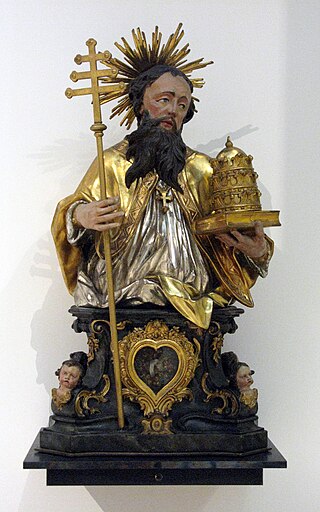
Pope Linus was the bishop of Rome from c. AD 67 to his death. As with all the early popes, he was canonized.
Pope Marcellus I was the bishop of Rome from May or June 308 to his death. He succeeded Marcellinus after a considerable interval. Under Maxentius, he was banished from Rome in 309, on account of the tumult caused by the severity of the penances he had imposed on Christians who had lapsed under the recent persecution. He died the same year, being succeeded by Eusebius. His relics are under the altar of San Marcello al Corso in Rome. Since 1969 his feast day, traditionally kept on 16 January, is left to local calendars and is no longer inscribed in the General Roman Calendar.
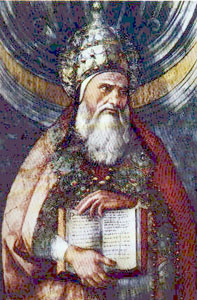
Pius I was the bishop of Rome from c. 140 to his death c. 154, according to the Annuario Pontificio. His dates are listed as 142 or 146 to 157 or 161, respectively. He is considered to have opposed both the Valentinians and Gnostics during his papacy. He is considered a saint by the Catholic Church and the Eastern Orthodox Church with a feast day in 11 July, but it is unclear if he died as a martyr.
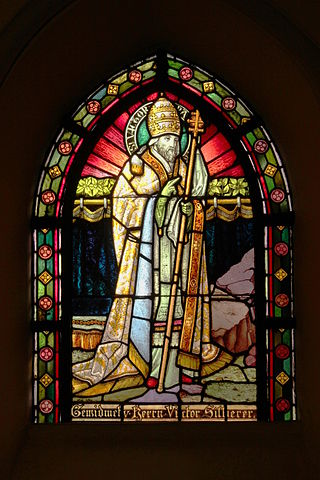
Pope Victor I was the bishop of Rome in the late second century. The dates of his tenure are uncertain, but one source states he became pope in 189 and gives the year of his death as 199. He was born in the Roman Province of Africa—probably in Leptis Magna. He was later considered a saint. His feast day was celebrated on 28 July as "St Victor I, Pope and Martyr".
Pope Felix I was the bishop of Rome from 5 January 269 to his death on 30 December 274.

Pope Anacletus, also known as Cletus, was the bishop of Rome, following Peter, and Linus. Anacletus served between c. AD 79 and his death, c. AD 92. Cletus was a Roman who, during his tenure as pope, ordained a number of priests and is traditionally credited with setting up about twenty-five parishes in Rome. Although the precise dates of his pontificate are uncertain, he "...died a martyr, perhaps about 91". Cletus is mentioned in the Roman Canon of the mass; his feast day is April 26.
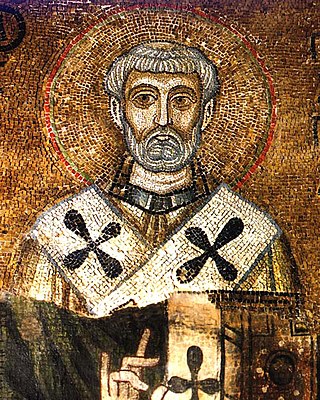
Pope Clement I was bishop of Rome in the late first century AD. He is listed by Irenaeus and Tertullian as the bishop of Rome, holding office from 88 AD to his death in 99 AD. He is considered to be the first Apostolic Father of the Church, one of the three chief ones together with Polycarp and Ignatius of Antioch.
Pope Marcellinus was the bishop of Rome from 30 June 296 to his death in 304. A historical accusation was levelled at him by some sources to the effect that he might have renounced Christianity during Emperor Diocletian's persecution of Christians before repenting afterwards, which would explain why he is omitted from lists of martyrs. The accusation is rejected, among others, by Augustine of Hippo. He is today venerated as a saint in the Catholic Church and in the Serbian Orthodox Church.
Pope Liberius was the bishop of Rome from 17 May 352 until his death. According to the Catalogus Liberianus, he was consecrated on 22 May as the successor to Pope Julius I. He is not mentioned as a saint in the Roman Martyrology. That makes him the earliest pontiff not to be venerated as a saint in the Roman Rite and one of only two popes to be omitted from Roman Catholic sainthood in the first 500 years of church history.
Pope Hyginus was the bishop of Rome from c. 138 to his death in c. 142. Tradition holds that during his papacy he determined the various prerogatives of the clergy and defined the grades of the ecclesiastical hierarchy.
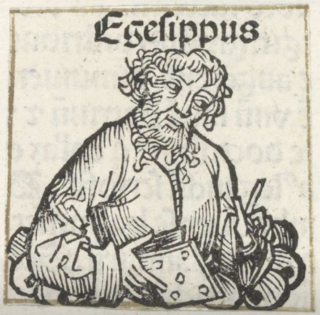
Hegesippus, also known as Hegesippus the Nazarene, was a Christian writer of the early Church who may, in spite of his Greek name, have been a Jewish convert and certainly wrote against heresies of the Gnostics and of Marcion. The dates that Hegesippus flourished are insecurely fixed by the statement of Eusebius that the death and apotheosis of Antinous (130) occurred in Hegesippus' lifetime, and that he came to Rome under Pope Anicetus and wrote in the time of Pope Eleuterus.
A papal renunciation also called a papal abdication, occurs when the reigning pope of the Catholic Church voluntarily steps down from his position. As the reign of the pope has conventionally been from election until death, papal renunciation is an uncommon event. Before the 21st century, only five popes unambiguously resigned with historical certainty, all between the 10th and 15th centuries. Additionally, there are disputed claims of four popes having resigned, dating from the 3rd to the 11th centuries; a fifth disputed case may have involved an antipope.
Hermas was a well-to-do freedman and earnest Christian, who lived in Ancient Rome. He was a brother of Pius, Bishop of Rome about the middle of the 2nd century. Some later writers confuse him with Hermas of Dalmatia, mentioned in Romans 16:14. Hermas the freedman was the character and, by some estimations, the author of the work titled The Shepherd of Hermas, which, in the early Church, was sometimes classed among the canonical "Scriptures".

The Chronograph of 354, also known as the Calendar of 354, is a compilation of chronological and calendrical texts produced in 354 AD for a wealthy Roman Christian named Valentinus by the calligrapher and illustrator Furius Dionysius Filocalus. The original illustrated manuscript is lost, but several copies have survived. It is the earliest dated codex to have full page illustrations. The term Calendar of Filocalus is sometimes used to describe the whole collection, and sometimes just the sixth part, which is the Calendar itself. Other versions of the names are occasionally used. The text and illustrations are available online.
The historical roots of Papal primacy can be traced back to the early centuries of Christianity, wherein the Bishop of Rome, commonly referred to as the Pope, gradually accrued increasing authority and recognition. A confluence of historical, theological, and political factors contributed to this development.

The papal conclave of March–April 1605 was convened on the death of Pope Clement VIII and ended with the election of Alessandro Ottaviano de' Medici as Pope Leo XI on 1 April 1605. It was the first of two papal conclaves in 1605, with Leo dying on 27 April 1605, twenty-six days after he was elected, and the conclave to elect his successor being held in May. The conclave saw conflict regarding whether Cesare Baronius should be elected pope, and Philip III of Spain, the Spanish king, excluded both Baronius and the eventually successful candidate, Medici. Philip's exclusion of Medici was announced by Cardinal Ávila after his election to the papacy, and the other cardinals did not view it as valid since Medici had already been elected pope.

Papacy in early Christianity was the period in papal history between 30 A.D., when according to Catholic doctrine, St. Peter effectively assumed his pastoral role as the Visible Head of the Church, until the pontificate of St. Miltiades, in 313, when Peace in the Church began.
References
- George Edmundson, 1913. The Church in Rome in the First Century (Bampton Lectures) (Lecture VIII, on-line)
- Catholic Encyclopedia: "Chronological Lists of Popes" (on-line)